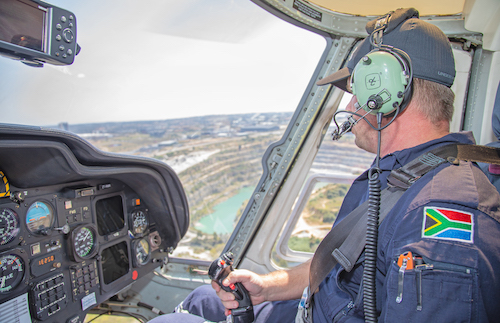|
Feb
12
2024
|
|
Posted 1 years 327 days ago ago by Admin
|
|

HALO Aviation is headquartered at the Ultimate Heliport in Gauteng, South Africa.
Their ICU air ambulance fleet consists of Helicopter Emergency Medical Service (HEMS) and fixed-wing aircraft, and are among the most technologically advanced on the continent and equipped with advanced lifesaving equipment.
HALO has a large footprint and serves Africa and South Africans from multiple operation centres around the country. It is composed of passionate professionals with a calling to serve and save lives; they are reliable rapid responders with a proven track record.
Key Aspects
For over a decade they have been providing critical patient care when it counts most. Their team of dedicated pilots, an impressive fleet of aircraft, and highly trained medical staff, are on call 24/7/365 days a year. Pilots and medical crews are highly skilled and have a reputation for their specialized delivery of emergency patient care.
The fleet consists of five rotor-wing, and one fixed-wing aircraft, and are permanently ICU configured. Air ambulances are equipped for every conceivable critical care crisis and in any given month they respond to as many as 150 emergencies.
Their advanced in-house emergency call center uses sophisticated dispatching software, mapping technology, and is operated by highly efficient HALO staff who appreciate that in a crisis – every second counts. (www.haloav.co.za)
I sat down with Ryan Horsman, CEO of HALO Aviation. His passion for HALO Aviation and the patients they serve is evident from these quotes:

Company Foundation
‘’The build-up for us has been based on securing exceptional patient care standards, enabling people to call us with a faster reaction time. To ensure that professionalism and patient care comes first, we've moved into the twin-engine sphere, which enables us to perform 24-hour operations.”
Why we chose the Airbus BK117
They chose the Airbus BK117 for various crucial reasons. Ryan says, “We found the BK117 to be an economical model for HALO, from a financial aspect and practical purposes, it certainly gives us a lot of room inside the aircraft, allowing space for patient care, search and rescue, hoisting and long-line operations. It has sliding doors enabling spotting or just facilitating operations from its side’
A critical aspect is a speedy response. ‘’Our activation time is 8 minutes. The crew is scrambled, helicopter airborne and generally speaking, we'd be flying to a road accident scene where a critical patient is airlifted. We take a specialist resource to the scene. Unprepared landing zones are utilised a majority of the time, such as road surfaces or out in the bush or on mountain tops. The paramedics and doctors would tend to treat the patient, get them back into the aircraft, and we'd go into an appropriate facility where the patient would receive a high level of care.’’

Variety of Missions
“In addition to emergency missions, HALO also performs inter-facility transfers, where patients are transferred from one medical facility to another to upgrade their level of care. We also undertake some rescue operations in the sense of long-line rescue, where a patient would be trapped in a crevasse or on a mountain somewhere inaccessible by vehicle, and rescuers are unable to walk to the patient. Often the stretcher is not an option, and landing may be problematic as there may be jagged rocks stepping up or uneven surfaces. We utilise the long-line and attach our rescuers to that. The patient is inserted into a basket and extracted. We move to a suitable landing location, have the patient transferred into the aircraft and then we’re off to the hospital.’’
Other advantages of the Airbus BK117
‘’We were the first HEMS operating in South Africa to operate a mechanical CPR device, which enables us to free up two hands of a treating practitioner, we have the ability to perform CPR on a patient with this device for 3 hours continuously, if required, and have two other personnel that can attend to the patient. This was a game changer for us, and we wouldn't be able to do that in any other aircraft. One of the other facets, which is certainly advantageous, is that we can do extracorporeal membrane oxygenation (ECMO) transfers. It involves a lot of oxygen on board, a number of personnel and sufficient space to take all the equipment on board for that patient.”

Memorable mission
‘’We had the unfortunate incident whereby a gas tanker exploded in a suburban environment. We were able to activate and extract a number of patients. Our configuration affords us the ability to take two critical patients at one time and we transferred a number of patients to upgraded care facilities in this instance.’’
READ MORE ROTOR PRO: https://justhelicopters.com/Magazine
WATCH ROTOR PRO YOUTUBE CHANNEL: https://buff.ly/3Md0T3y
You can also find us on
Instagram - https://www.instagram.com/rotorpro1
Facebook - https://www.facebook.com/rotorpro1
Twitter - https://twitter.com/justhelicopters